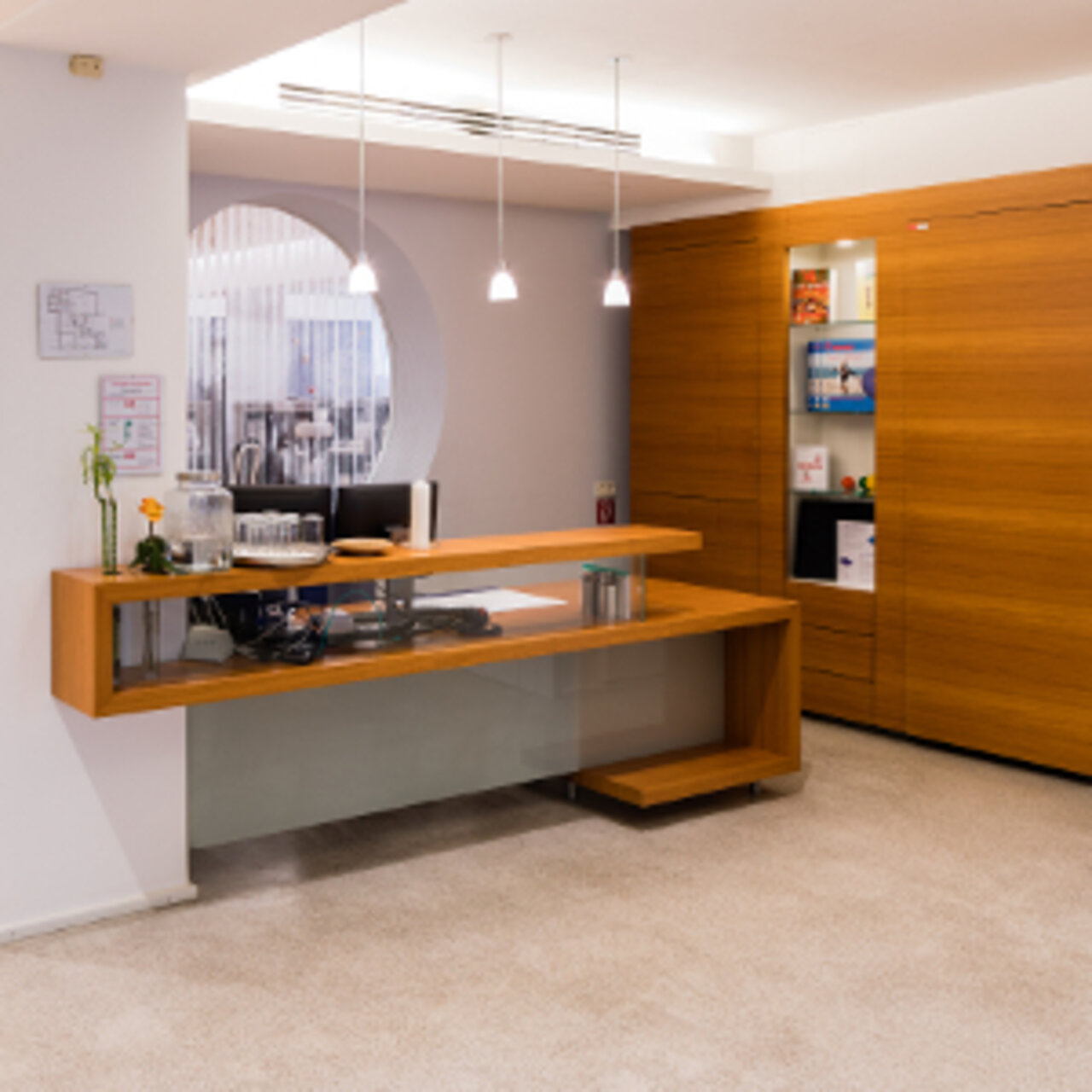Specialists in Orthopedic Rehabilitation
1 Specialist found
Information About the Field of Orthopedic Rehabilitation
2>Orthopedic Rehabilitation </h2> <h2>What Is Orthopedic Rehabilitation?</h2>
The orthopedic rehabilitation of the German Pension Insurance serves to restore or improve the ability to work after an acute orthopedic illness or in case of chronic disease. The primary aim of rehabilitation provided by the statutory health insurance funds is to restore or improve the independence of the person in the daily routine. Orthopedic rehabilitation includes the following treatment and services:
- Physiotherapy
- Sports therapy and medical training therapy
- Physical therapy with massages, cold, heat or water treatments
- Occupational therapy
- Medical care and diagnostics
- Nursing care (including wound care)
- Social service and psychological counseling
- Health education and dietary advice
- Orthopedic shoe technology and orthopedic technology
- Rehabilitation aftercare
<h2>For Whom Is an Orthopedic Rehab Useful?</h2>
Orthopedic rehabilitation is the right treatment for acute symptoms of chronic disease processes. It depends on the individual extent of the clinical picture and the prognosis do decide whether the affected person needs rehabilitation. Generally speaking, orthopedic rehabilitation is advisable if there are permanent restrictions in the quality of life, and if movements or postures have to be supported in the long term.
<h2>Which orthopedic diseases can be treated in an orthopedic rehabilitation clinic?</h2>
Orthopedic rehabilitation is primarily for patients who have previously undergone surgery in the musculoskeletal system. Typical cases are surgeries of large joints such as the knee, hip, or shoulder. Also, interventions in the spine, e.g., after a herniated disc, are often indications for subsequent rehabilitation. Chronic orthopedic diseases for rehabilitation include, among others, osteoporosis, scoliosis, arthrosis, or rheumatism.
<h2>Rehabilitation after knee surgery</h2>
Knee problems are not only widespread among athletes. Occupational stress or advanced age also often causes knee problems. Degeneration or inflammation are common triggers. In the case of chronic knee complaints and after knee surgeries, rehabilitation is usually recommended, for example, after a meniscus surgery or a total endoprosthesis (TEP).
<h2>Hip rehabilitation</h2>
Rehabilitation is frequently recommended as a follow-up treatment after inserting an artificial hip or partially artificial hip. The endoprostheses are primarily used when the hip joints have degenerated. They are made of metal, plastic, or ceramic. After the surgery, the joint should be gradually exposed to weight-bearing and movement instructed by a physiotherapist. Progressive muscle build-up is also necessary.
<h2>Back and Spine Rehabilitation</h2>
The herniated disc is a common diagnosis in informal speech. In severe cases, patients must undergo surgery. Rehabilitation can help the patients to build up their back muscles afterward. Besides, patients learn how they can protect their back and prevent new slipped discs. For scoliosis patients, rehabilitation, either after surgery or initially, can be an excellent way to strengthen their back through physiotherapy and to practice back-friendly sports. Also, patients can learn back-friendly movement sequences in back therapy training.
<h2>What Are the Goals of Orthopedic Rehabilitation?</h2>
Rehabilitation is an interdisciplinary field. In orthopedic rehabilitation, mainly specialists in orthopedics and trauma surgery take care of the patients. In the beginning, the therapy goals are discussed together, and a therapy plan is created. A multimodal therapy concept includes sports and physiotherapy, physical therapy, and occupational therapy. Also, the patient receives psychological treatment and comprehensive advice on various health and lifestyle aspects, e.g., nutrition and prevention in everyday life and at work.
An overview of the goals:
- Reducing the consequences of illness with regard to body, psyche and social contact
- Pain reduction
- Increase of the resilience limit
- Increase of the general well-being
- Fitness improvement
- Improving the mobility of joints and spine
- Improving endurance and strength
<h2>How and Where Can I Apply for a Treatment in an Orthopedic Rehabilitation clinic?</h2>
A doctor has to determine the requirements for rehabilitation. The patient must have the prognosis that rehabilitation can alleviate the existing symptoms. Besides, the patient must be in the physical and mental condition to start and complete the rehabilitation. The application involves several steps and is a complicated procedure.
<h2>Application for an Orthopedic Rehabilitation</h2>
Patients can apply for rehabilitation as a follow-up treatment after an inpatient stay or as a treatment without prior hospitalization.
The responsible payers are the German Pension Insurance for the working population, disability pensioners, and job applicants. At the same time, the health-insurance is responsible for non-working adults and pensioners. The corresponding rehabilitation application must be filled out and include the following documents:
- Self-disclosure form
- List of pre-existing diseases
- Medical report from the doctor
- Choice of the clinic (if there is a preference)
- The attending physician must justify the rehabilitation to the payer
- The necessity of the rehabilitation is checked by the insurance company
If authorization is granted, the patient must inform his doctor and employer that rehabilitation will be attended. The payer will send information and details of the stay.
If the rehabilitation is rejected, the patient can object to this and justify the objection with a statement or expert opinion.
Source:
- Sozialgesetzbuch Neuntes Buch (SGB IX)
- Hanns-Peter Scharf: Orthopädie und Unfallchirurgie. Elsevier 2011, ISBN 978-3-437-24401-8.
- Rabenberg: Gesundheitsberichterstattung des Bundes - Heft 54: Arthrose. Robert-Koch-Institut (RKI) 2013, ISBN 978-3-896-06219-2.
- Stöve et al.: S2k-Leitlinie Gonarthrose. Deutsche Gesellschaft für Orthopädie und Orthopädische Chirurgie (DGOOC). Stand November 2017. Accessed on 27 June 2018.
- Michael et al.: The Epidemiology, Etiology, Diagnosis, and Treatment of Osteoarthritis of the Knee. In: Deutsches Aerzteblatt Online. 2010, doi: 10.3238/arztebl.2010.0152.
- Bretschneider, Günther: Hüftgelenk – Arthrose und Arthritis. In: Orthopädie und Unfallchirurgie up2date. Volume 10, number 03, 2015, doi: 10.1055/s-0041-101944, S. 231–256.
